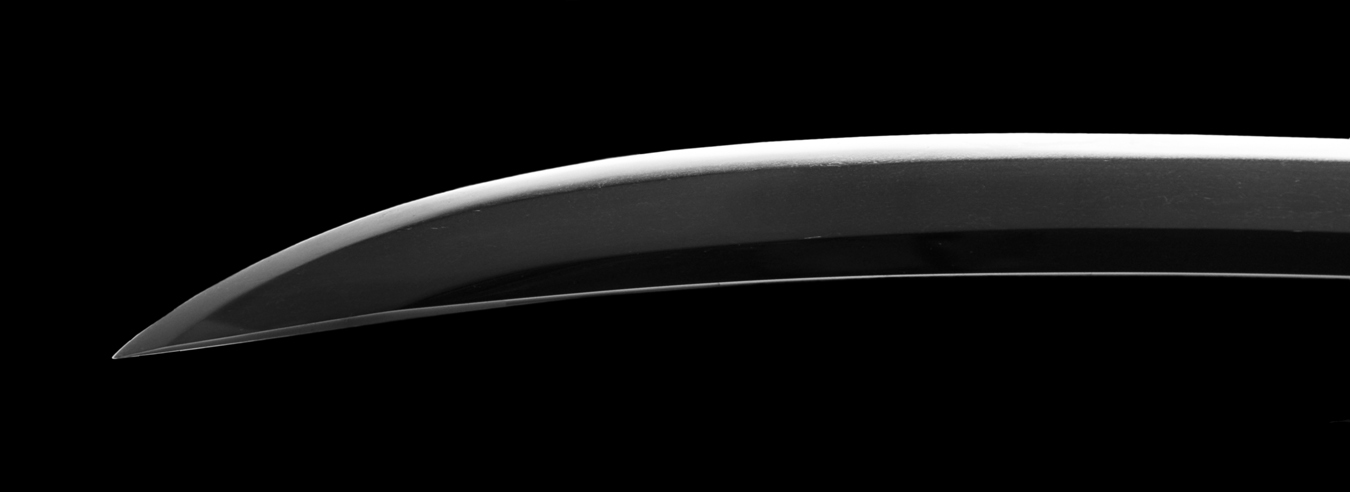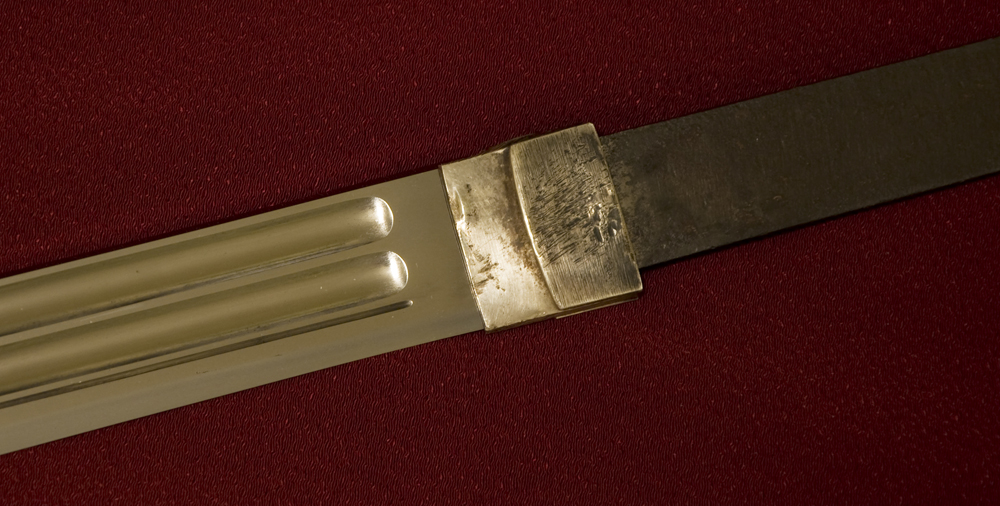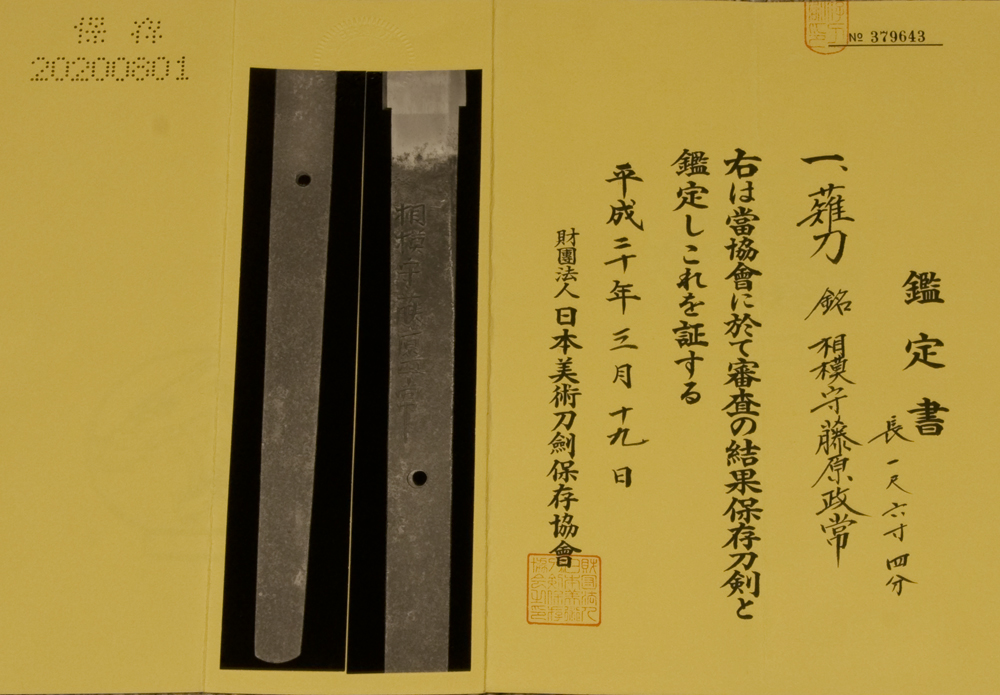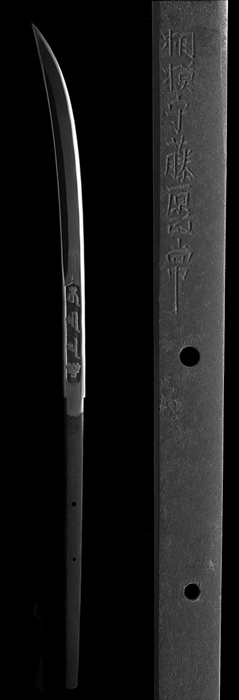|
| |||||||||||||||||||||||||||||||||||||||||||
Hamon : Ko-nie deki suguha with notare. The nioi-guchi is tight and bright. Kuchigaiba can be seen in several areas. Niju-ba and inazuma are also present.
Boshi : Togari on the omote with gunome in the kaeri. Ko-maru on the ura.
Kitae: Itame hada mixed with mokume and masame. Ji-nie is abundant and chikei are also present.
About this sword : This is a naginata by the shodai Owari master smith, Sagami no kami Masatsune. He is well known as part of the "Owari san-saku". I.E. Sagami no Kami Masatsune, Hida no Kami Ujifusa and Hoki no kami Nobutaka. Masatsune is the most famous maker of the Owari Shinto group and his forte were naginata, such as this example. Masatsune was born in 1535. He received the title of "Sagami no Kami" from Toyotomi Hidetsugu in 1591. He retired from sword making in 1607 and the head of his shop was transferred to the Nidai Masatsune. However, the nidai passed away unexpectedly in 1609 so the first generation came out of retirement and made swords until his passing in 1619. The blades he made after he came out of retirement are all signed with "Nyudo" at the end of the mei. Based on the mei of this blade,"Sagami no Kami Fujiwara Masatsune" we can be certain it was made between 1591 and 1607. This naginata is made in a variation of the katakiri-ba style. The omote has a ridge near the edge of the blade while the ura has a normal profile. This shape has been documented to cut very well by such authors as Yoshikawa Kentaro. We often see it on works by smiths that were known to produce exceptionally well cutting blades. This naginata has horimono of framed bonji on the omote and double grooves with a soe hi on the ura. Based on the shape of the moto hira-ji we can know that this horimono was part of the original design and not added later. This blade has no kizu and is in full polish. It comes with a shira-saya, an old habaki and a NBTHK Hozon paper. This is an ubu, zaimei blade by a Jo Jo Saku maker at the top of his school. An ideal naginata for study and appreciation.
SOLD














